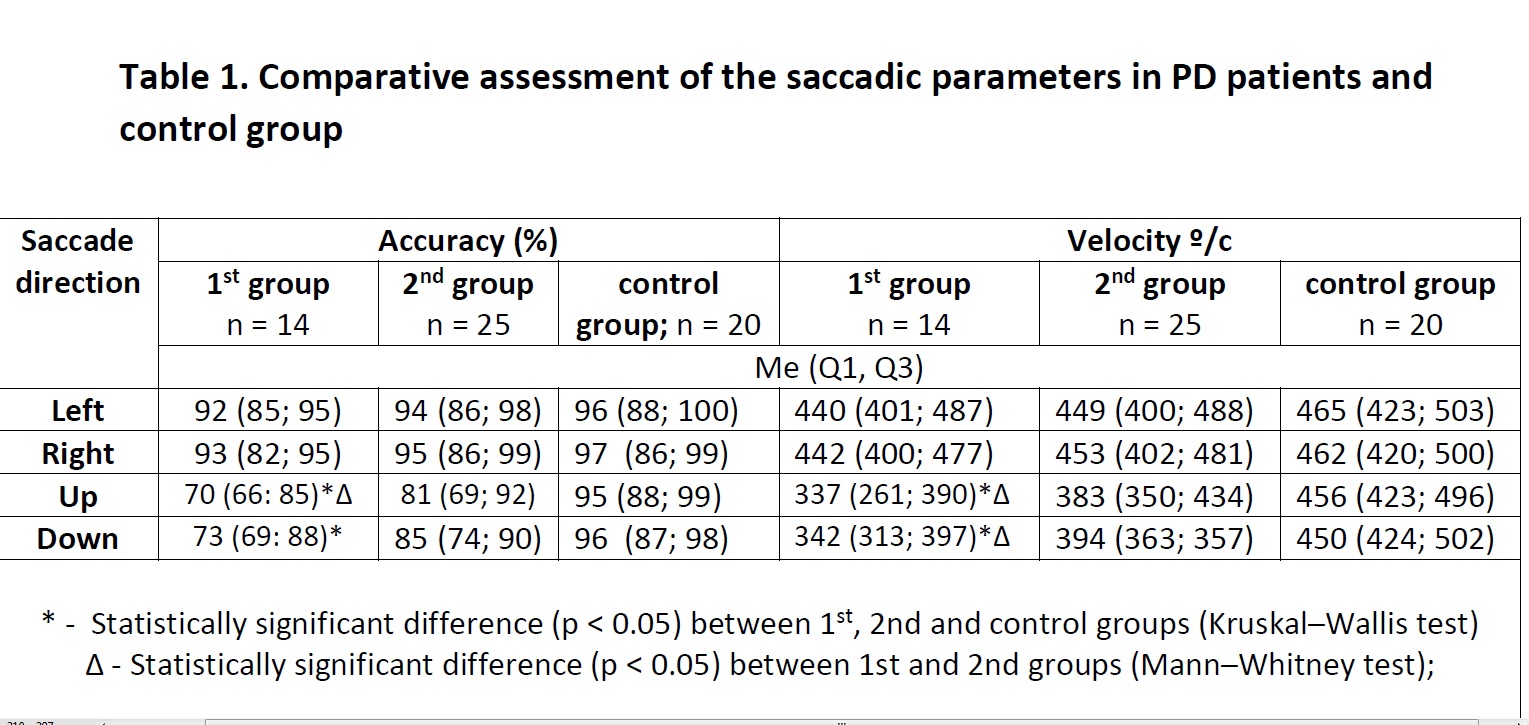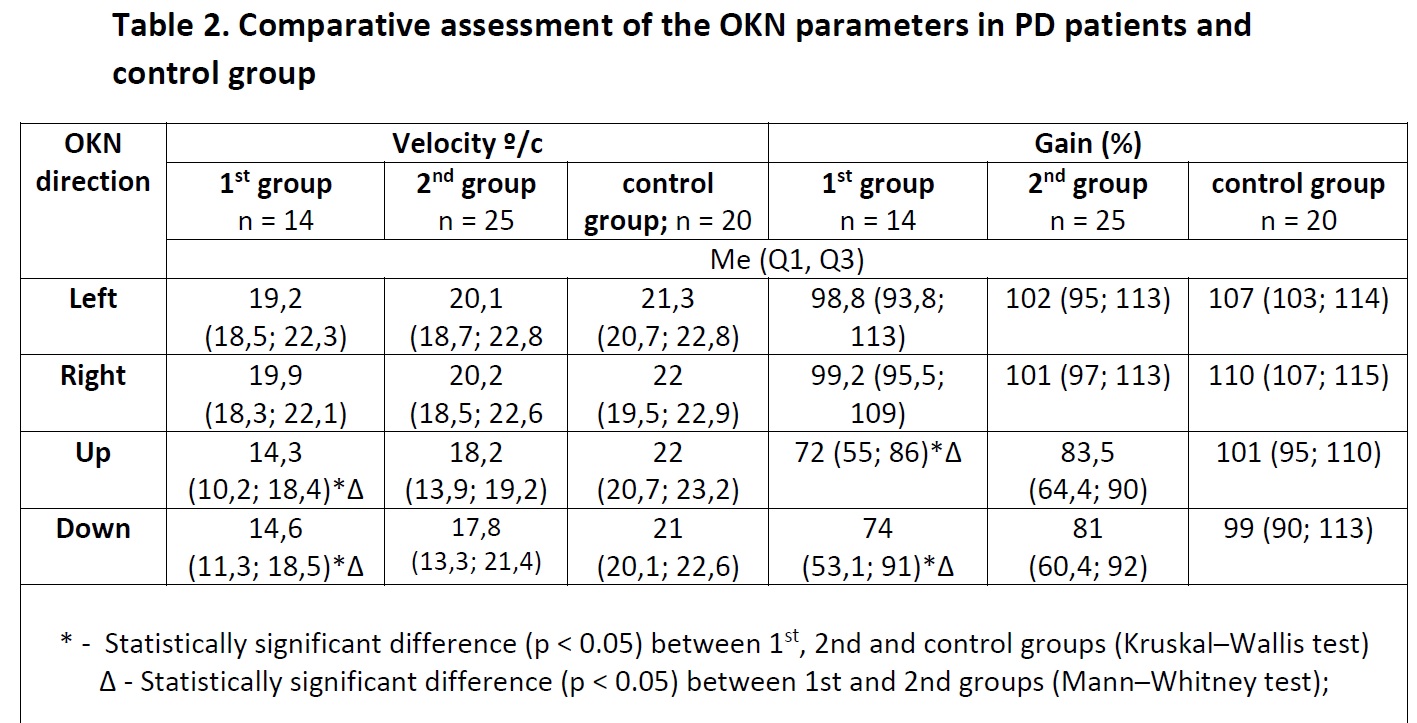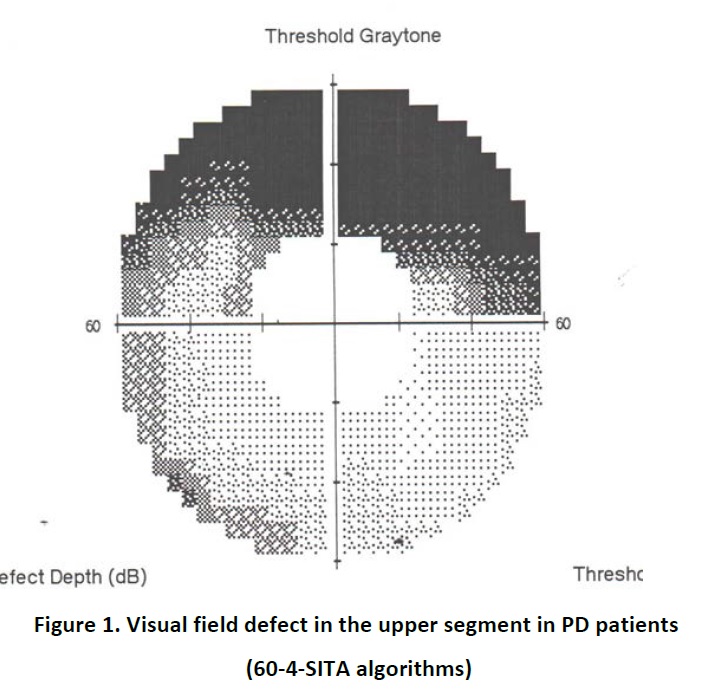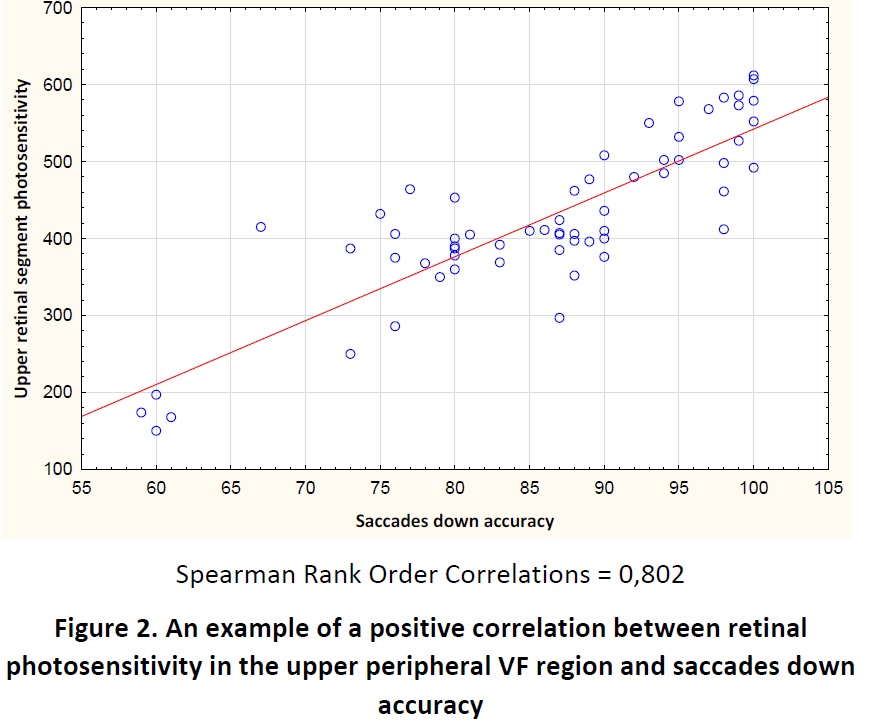Category: Parkinson's Disease: Pathophysiology
Objective: To investigate the relationship between the visual function state, oculomotor parameters and MRI morphometry data in PD patients with and without camtocormia.
Background: Interacting with a rapidly changing world requires fine coordination between the visual perception and oculomotor function. Optokinetic reflex (OKN) and saccades are basic reflexes implement appropriate visual-motor interaction during which the image from the peripheral retina is transferred to the fovea. It requires a coordinated interaction of many brain structures. Dysfunction of the basal ganglia and brainstem may change visual-oculomotor interaction in patients with PD and camptocormia.
Method: We investigated 39 PD patients who were divided into two groups according to presence (1st group) and absent (2nd group) camptocormia and 20 age-matched controls. OKN and saccades were investigated by video-oculography. Threshold perimetry with photosensitivity determination in the central and peripheral retina assessed the visual function. MRI study was performed with voxel-based morphometry analysis.
Results: There was a significant decrease in the vertical saccades accuracy and velocity with relatively unchanged horizontal saccades in PD patients, but more pronounce for upward saccades in 1st group (table 1). Vertical OKN velocity was also significantly decreased in PD patients of the 1st group with a relatively unchanged horizontal OKN (table 2).
The visual field (VF) defect predominately was located in the superior peripheral region in PD patients, but more often was observed in persons with camtocormia (figure 1). A photosensitivity decrease in this retinal region had correlation with a decrease in the downward saccade parameters, and vertical OKN velocity (figure 2). Positive correlation was established between reduced in the volume of inferior temporal gyrus, posterior parietal cortex, cuneus and velocity of vertical OKN and saccades, between retinal photosensitivity and volume in posterior parietal cortex.
Conclusion: The disturbance in inputs from the retina has a great influence on the vertical oculomotor reflexes disorders and has association with a decrease in the brain structures volume involved in visual perception in PD. Probably, visual dysfunction also contributes to camtocormia, in which it is impossible to maintain the body vertical posture in counteracting gravity.
To cite this abstract in AMA style:
O. Alenikova, S. Likhachev. The role of the disorders in interaction between visual and oculomotor systems and their MRI correlation in patients with camtocormia in Parkinson’s disease [abstract]. Mov Disord. 2020; 35 (suppl 1). https://www.mdsabstracts.org/abstract/the-role-of-the-disorders-in-interaction-between-visual-and-oculomotor-systems-and-their-mri-correlation-in-patients-with-camtocormia-in-parkinsons-disease/. Accessed December 2, 2025.« Back to MDS Virtual Congress 2020
MDS Abstracts - https://www.mdsabstracts.org/abstract/the-role-of-the-disorders-in-interaction-between-visual-and-oculomotor-systems-and-their-mri-correlation-in-patients-with-camtocormia-in-parkinsons-disease/




